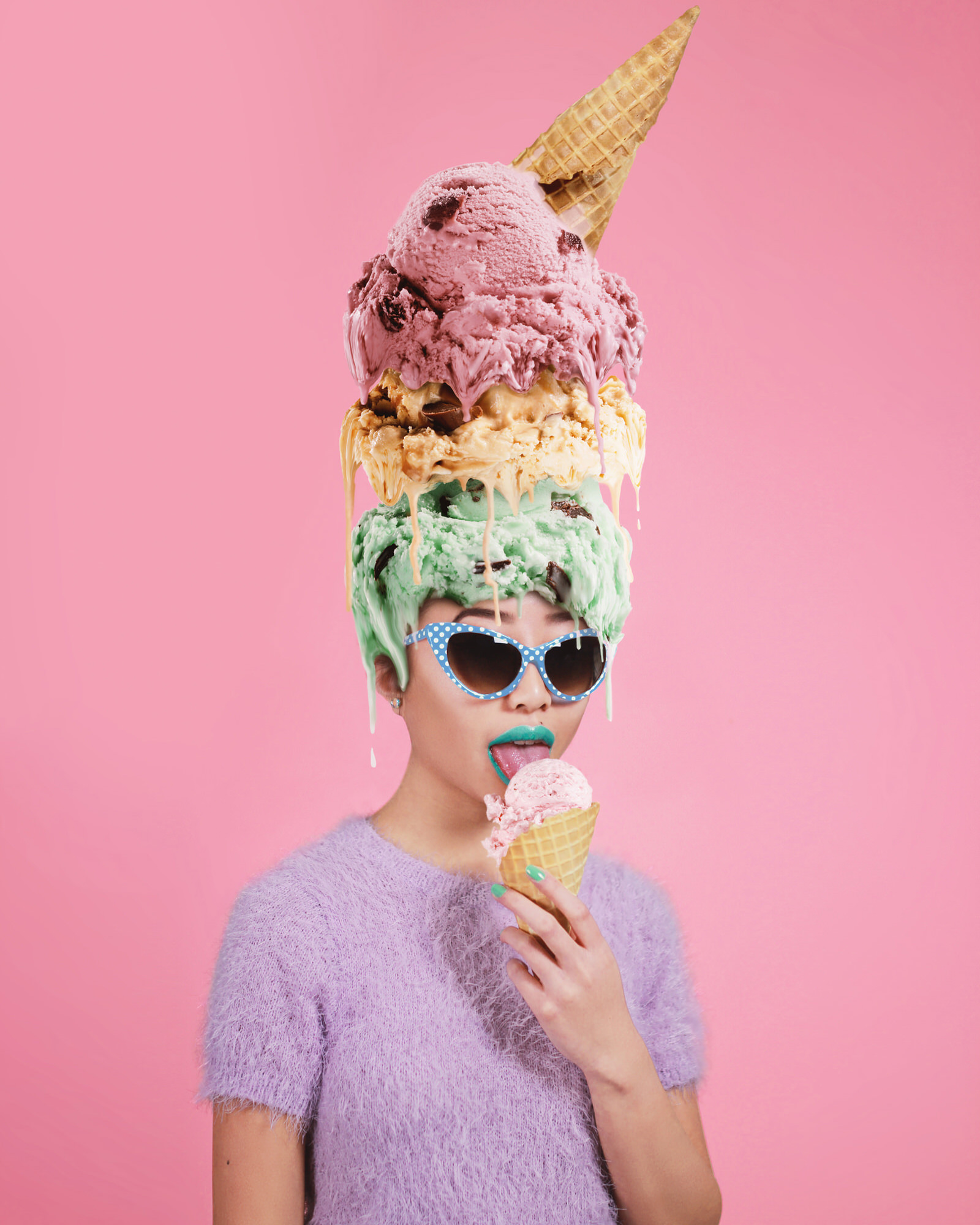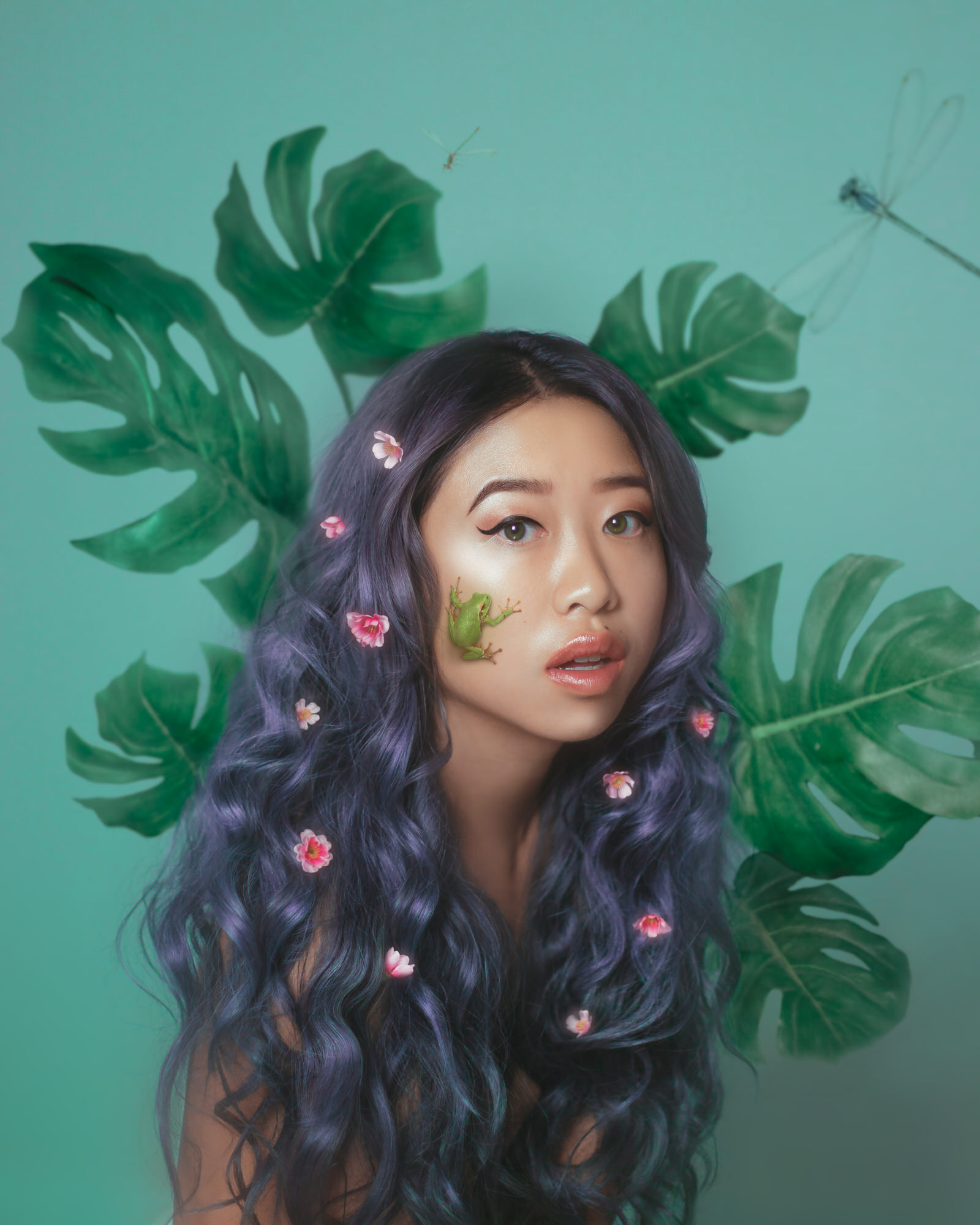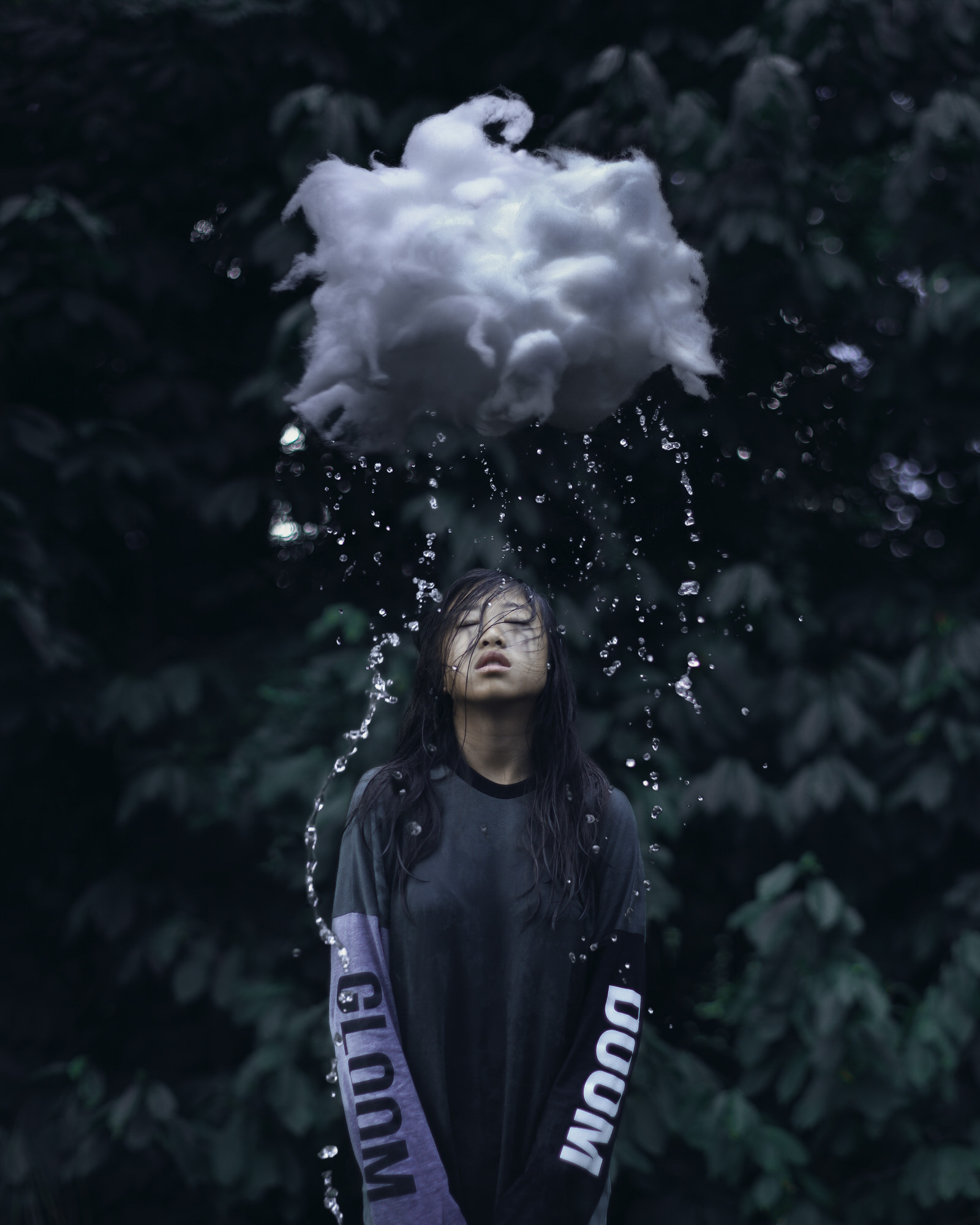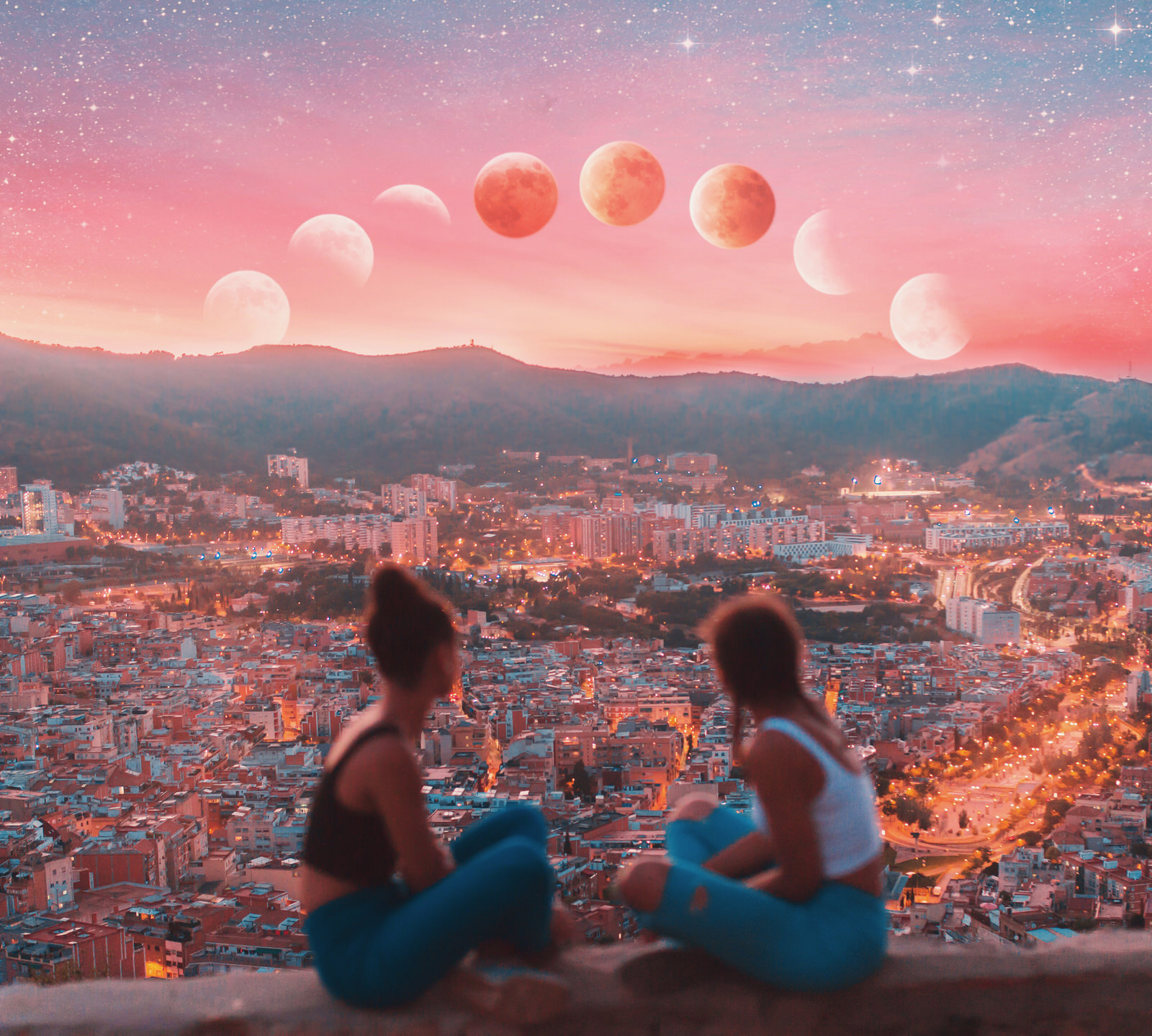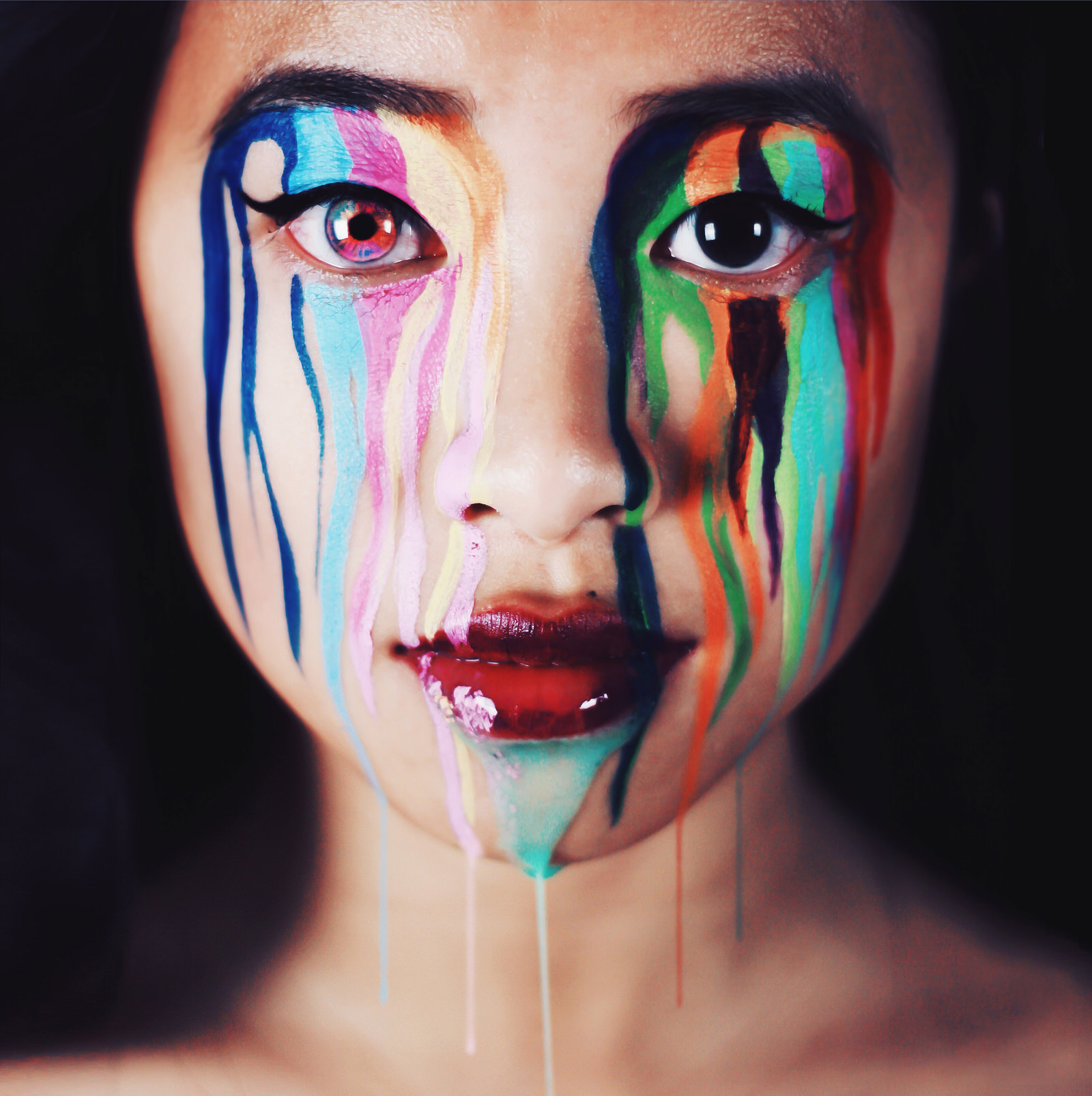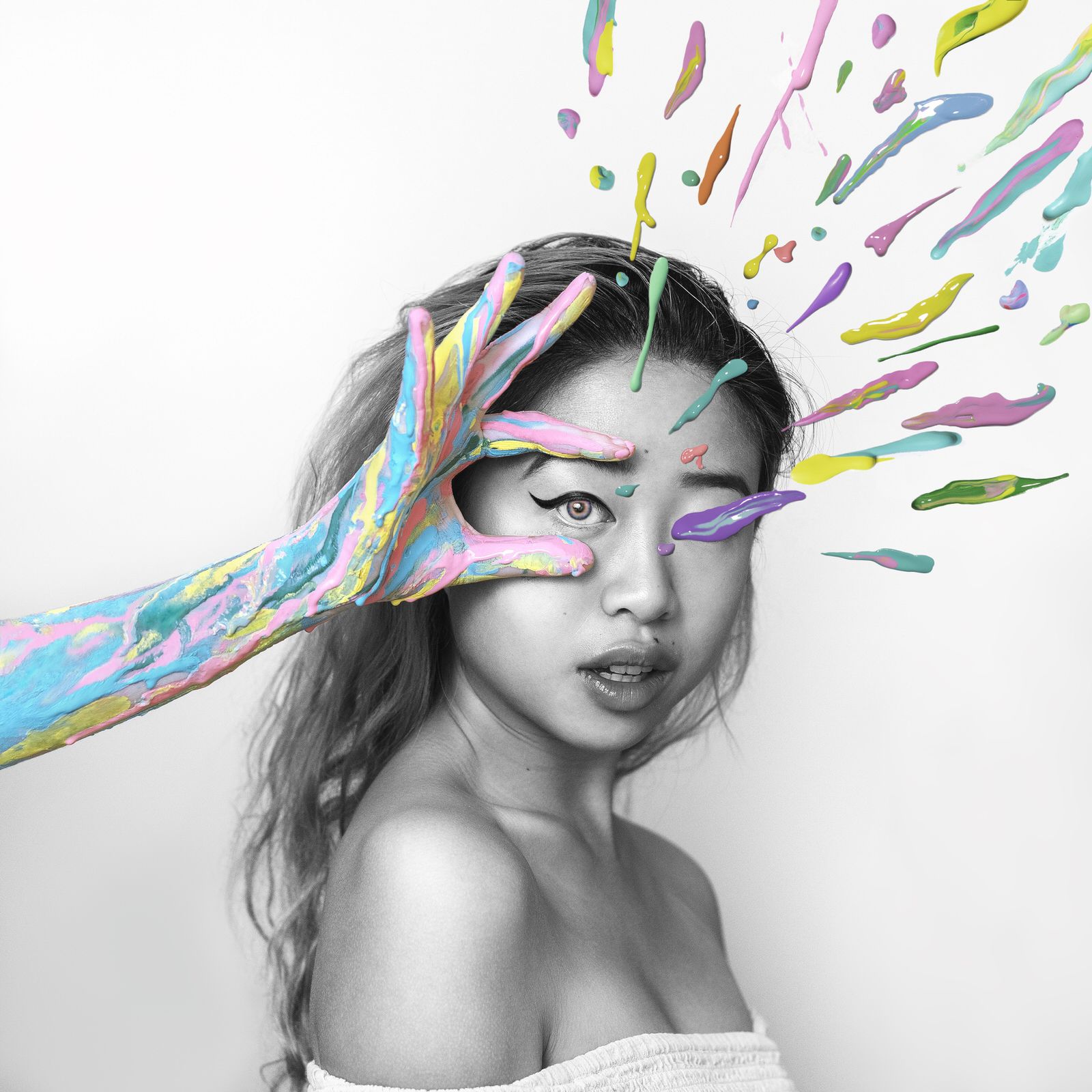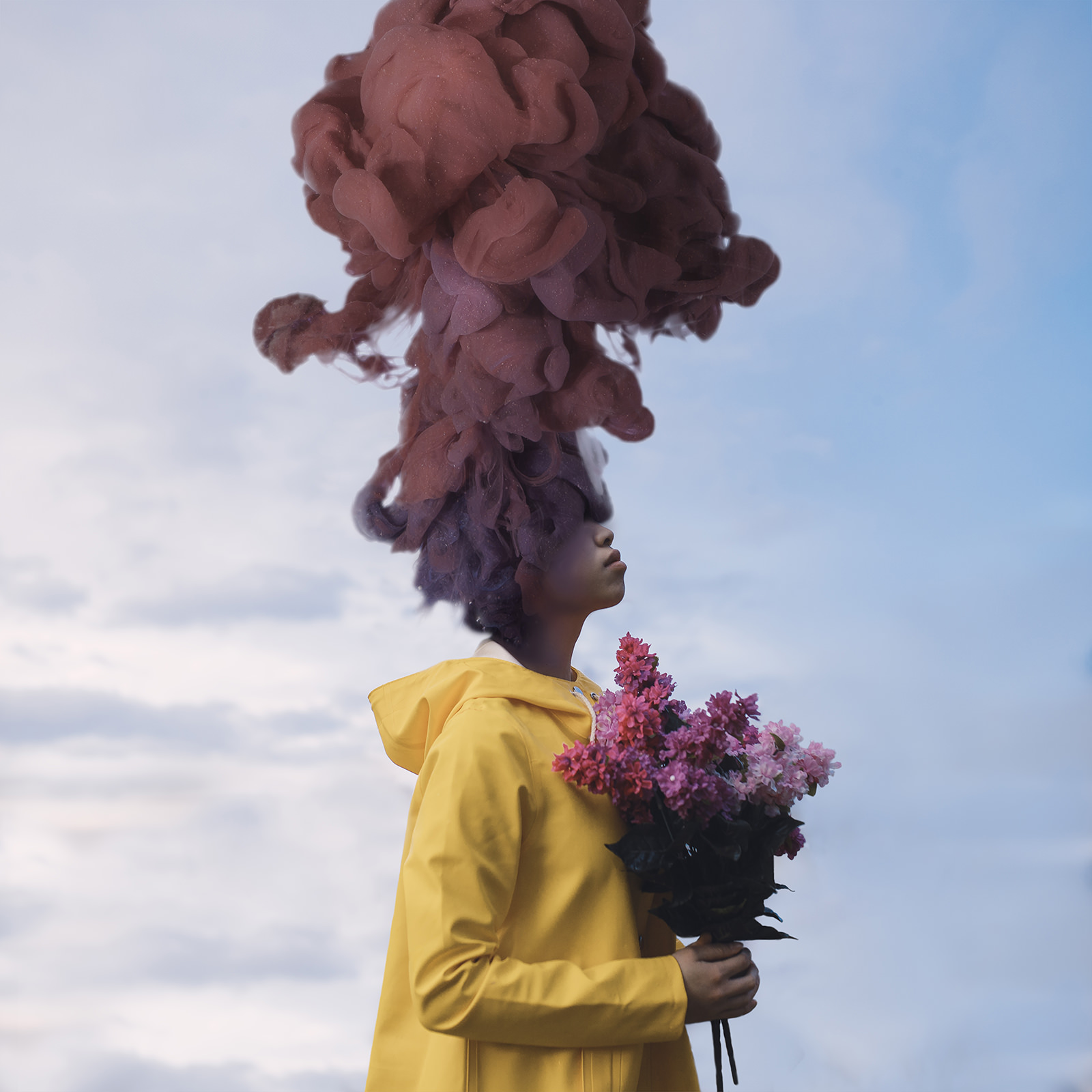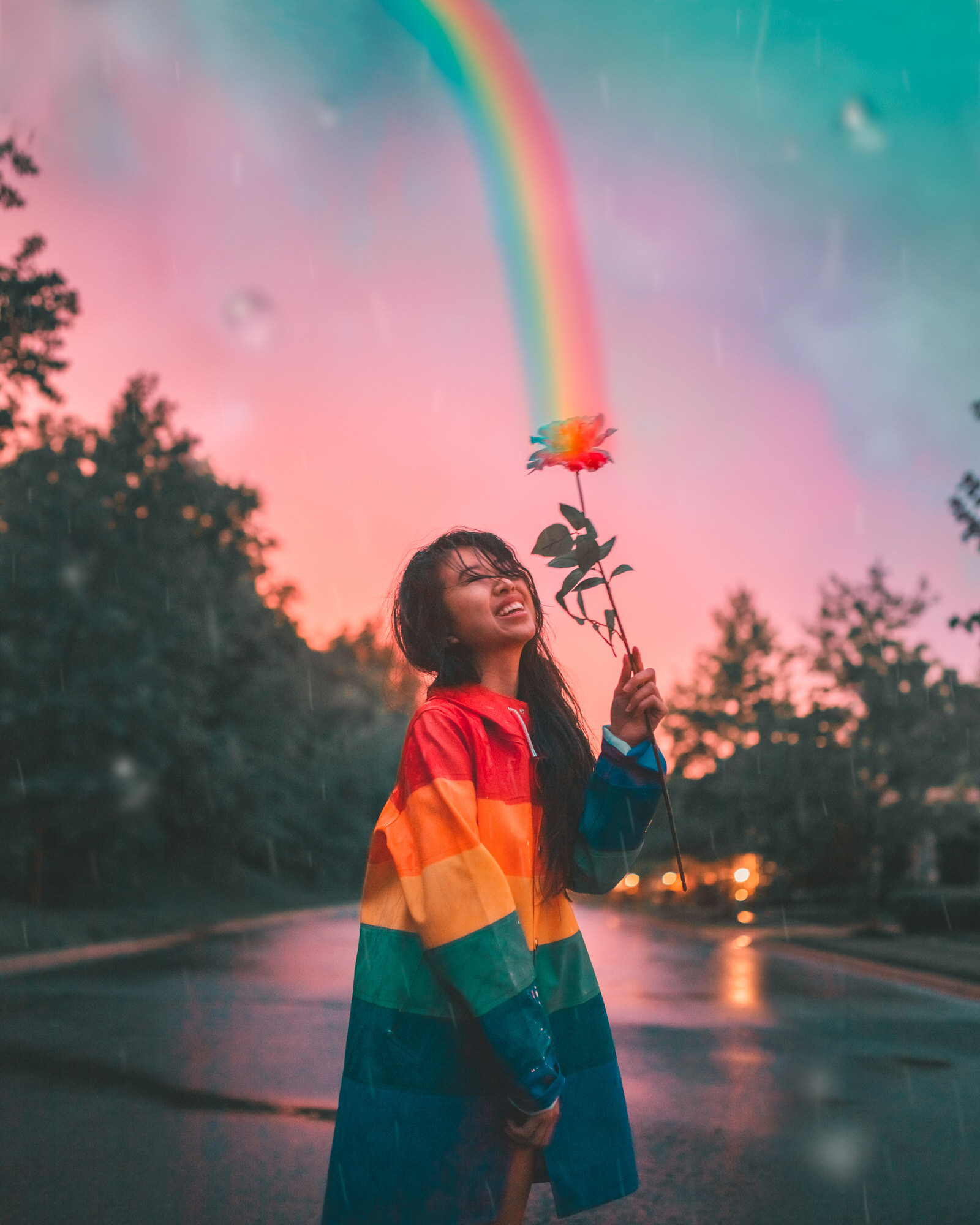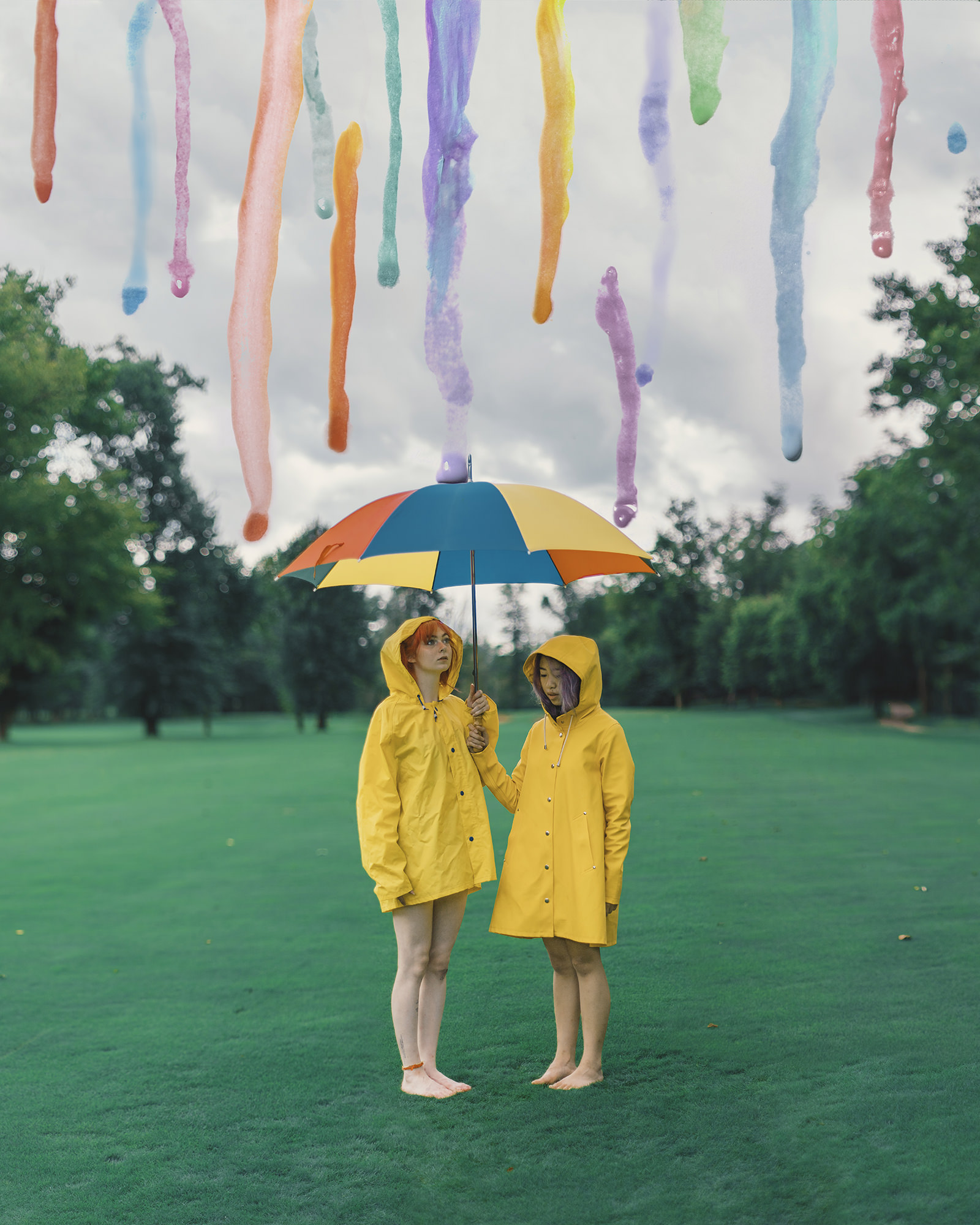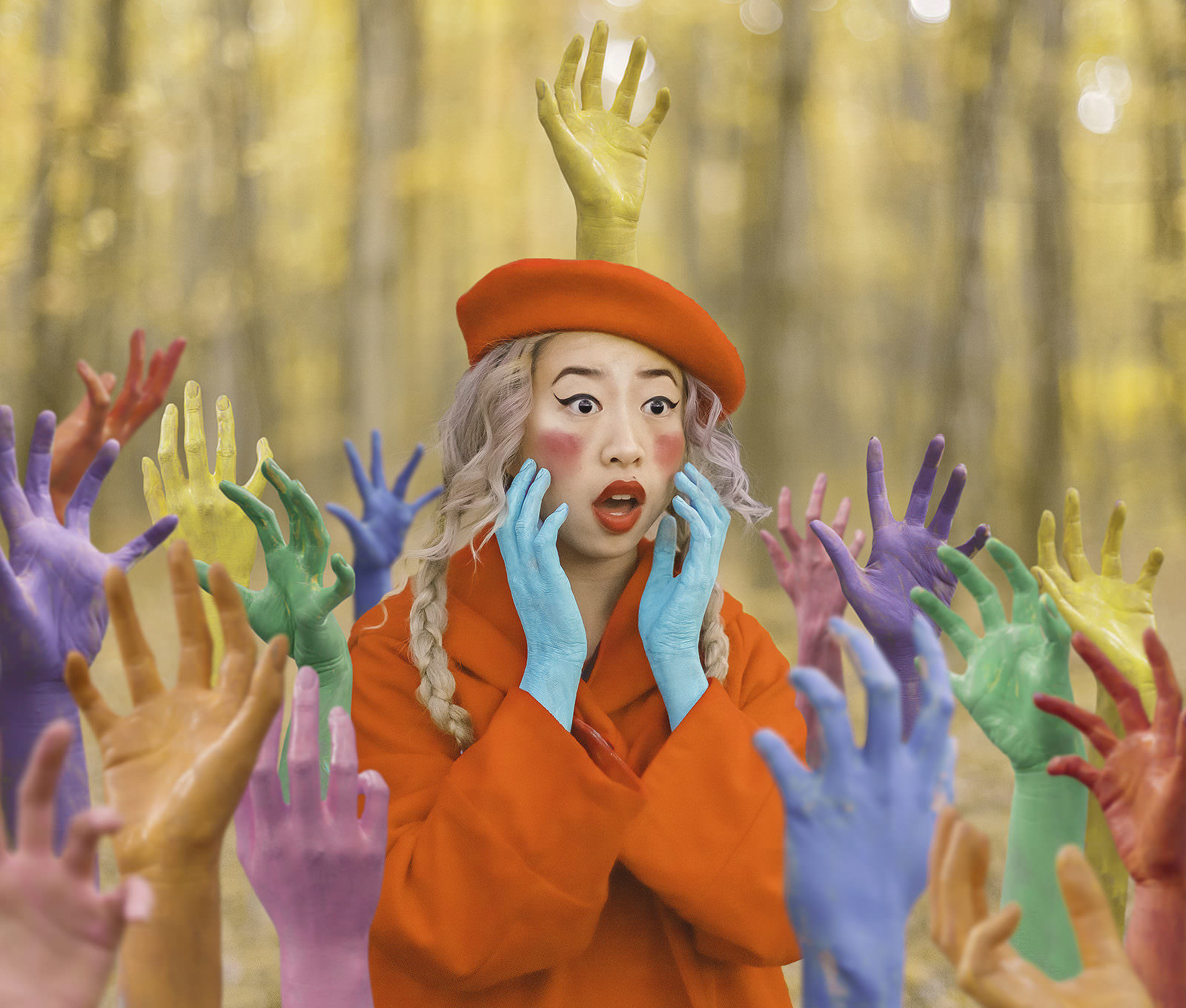
The Bright, Whimsical and Entirely Weird World of Instagram Star Natalia Seth
Photographer and multimedia artist Natalia Seth, also known as escapingyouth, started on Instagram when she was just 13 years old. Five years later, she has over 220,000 followers and is recognized world-wide for her colorful and whimsical surreal self-portraits.
In a new PHLEARN tutorial called, “Surreal Portrait Compositing in Photoshop,” Natalia joins Aaron in the studio to share her workflow with us. There’s over four hours of awesome content, with 22 video tutorials that walk us through how she combines images, applies creative coloring, and retouches her portraits in Photoshop.
I had the chance to chat with Natalia about her success on Instagram, her new photo book, how she comes up with her imaginative ideas and brings them to life, and her dream come true of getting to work with people and companies that have inspired her since she began as an image creator.
You just recently spent some time at the PHLEARN studio, shooting a tutorial with Aaron, how was that?
Yeah. Oh, my goodness, it was a dream. I’m a really big fan of PHLEARN. This is my second time with Aaron; I met him for the first time at Adobe MAX. But, getting to actually know him, and the team, and just being there in Chicago was amazing. I spent four days there. The first day was just preparation, and then the next three days were shooting.
PHLEARN is basically the building blocks of my education of Photoshop. It’s the only YouTube or teaching service for Photoshop that I ever stuck with because it was free and it was really well done and I could understand it.
How did you get started in photography?
Well, I started back when I was 13. I found an edit account on Instagram around 2013, and this is also around when Instagram was just starting, so everything was still kind of new. I found this account of another teenage girl who was also doing surrealistic edits of herself. She would have these crazy photos where half of her head would be coming out of a frame, or she would be coming out of a cloud.
I wanted to figure out how I could do that because I was fascinated. So, I stalked her, basically, and found what apps she used and what camera she used. I didn’t have any resources or even a phone back then, so I used my mom’s iPhone 4S for a lot of my self-portraits in the beginning.
I would place it against the wall and run and take a photo, and then edit with some apps I downloaded for free on her phone as well. Eventually, I really fell in love with it and started to post my own work on Instagram. Then, after a few months, I asked for a DSLR for Christmas and my parents were like, “No, it’s just a phase, you’re going to grow out of it, you’re 13.” You know, people that age go through phases really, really quickly. But, I was like, “No, no, I really like this, I really want a DSLR.” So, my parents finally gave in; somehow, I convinced them. After that, people started to be more attracted to my art on Instagram. I started posting more.
My mom is actually an artist, so she had Photoshop. That led me to experiment and see what the heck Photoshop was; it was so different from all the apps I’d been using. I continued using Photoshop and found PHLEARN on YouTube and that’s how I basically learned – through PHLEARN videos.
So, you enjoy the editing process and creating composites?
Yeah, I absolutely love it. That’s why I also started the weird style that I have, developing the weird things that I do right now, because I like making things weird, and out of the ordinary, and unusual – just things that you don’t usually see. So, this gives a little variety to your feed. When you’re scrolling, you’re like, “Oh, what the heck?” It kind of shocks you or something. But I just want to make an impact or provide something different in your day, other than just the normal stuff that you see.
It is quite different, very bright and whimsical. How did you nail down this style?
I started with the surrealistic or just editing type of style. So, it was never really just lifestyle type of stuff. I do that on the side, but I never felt satisfied when I did that type of stuff, just like photo shoots with like my friends. I wanted to do something else.
My mom is a surrealistic painter, so that’s maybe also why I’m super inspired by surrealism. I developed my style over the years, but it’s always been based around surrealism. And then, just in the last year, I’m really into color and more weird things. It developed into colorful surrealistic magic to realism.
You have a book coming out, The Imaginary World of Natalia Seth. Can you tell us a little bit about that?
Yeah. I started working on this book about a year ago. This publishing company called Thought Catalog reached out to me. They also published Brandon Woelfel’s Luminescence, which came out about two years ago. He come out with Thought Catalog’s first photo book, so this will be their second photo book that they’re producing.
They loved my style and thought it could translate well into a book. So, we’re working on this really cool interactive book which will be out in late April, hopefully. I wanted to make it not just like a regular photo book, but more interactive, really fun. I don’t know if I’m allowed to say what elements are going to be in it yet, but it’s going to be so cool. I’m really excited.
You started your Instagram account five years ago and were just sharing your images there in the beginning. What was the big moment where things changed? When did you start to see yourself as a photographer?
I was very fortunate when I started. There wasn’t a lot of edit accounts or people, in general, on Instagram. Like now, I think if you start, it’d be a lot harder to be recognized or to gain followers because there’s just a saturation of influencers, creators, and everyone who wants to do the same thing.
I think around 2013 or 2014, really, is when I was friends with a lot of people in the community, who were editing or just creative. I was friends with a lot of people, so I could host contests and promote other friends on my account, and my friends could do the same. That’s how I grew – I built a community through friends. Then, similar audiences started to look at my work and started to follow me. It was in the beginning mostly that I grew my following. Now it’s just like a slow incline.
I just recently got featured by Instagram – like the Instagram – so I climbed a lot in the past few weeks. Because they have over 275 million followers on there, so that was a crazy moment, too.
What other artists or photographers do you most admire?
I love Tim Walker for his fairytale style photography. And he has a lot of crazy sets with interesting props. I like Jimmy Marble on Instagram. He has a lot of pastel pops of color in his work and he’s worked with like a lot of big people. The way he shoots and the way he uses his color is amazing. And, of course, Wes Anderson because his storytelling and his coloring is incredible. I’m so fascinated by his work as well. But they’re all really, really influential to me and my work right now.
How did you start working with Adobe?
I started working with Adobe about a year ago. They had this platform called Project 1324. It’s their adolescent platform, for ages 13 to 24. Younger people can post their work on this platform, and there are challenges so they can submit their work. It’s for a bigger purpose usually. I did a piece on deforestation, for example, just different problems that they want to bring attention to. And they have different rewards, like a free Adobe Creative Cloud plan for a year, or things that incentivize younger people to create art for a bigger purpose. It’s a really cool platform. I started working with them over a year ago on one of these challenges. And then, after that, they just found me through Instagram, which is also crazy.
I did that first one, and a few more after that. Then, the Adobe Max one came up, which was life-changing as well because I’ve not been surrounded by that many creatives all at once. It was amazing.
You’re studying creative advertising right now, what are your plans for the future? Do you think you’ll stick with your self-portraits?
Yeah, definitely. I strayed from self-portraits for a little bit to shoot models and experiment. But I really do love self-portraiture because it’s a different type of thinking and shooting. And I like having that kind of therapy also because when you’re by yourself and shooting, I like the alone time.
But, after college, I think I want to continue what I’m doing. I’m studying creative advertising to hopefully do bigger projects on a larger scale than what I’m doing right now. But I still want to do freelance and hopefully just keep working with these companies that I love, like Adobe and PHLEARN.
Do you have any particular habits that are part of your creative process?
Yes. Often, I sketch my ideas when I first create. And I also listen to nice music while I sketch my ideas. I get a lot of my inspiration from the moment right before you fall asleep. When I’m falling asleep, I force myself to think of ideas, and then, just let my train of thought go wherever it may please. That’s a cool time to clear out my mind and think of creative things, just clear out all the clutter from the day. I often think of a lot of my ideas during that state, or when I’m sketching. I do go out and explore a lot for my photos, location scouting is fun.
What do you do when you hit a wall in your creative process?
I usually try to pause. I don’t like to take breathers, I just like to create. And I’m a really, really bad procrastinator, so I wait for the last minute. And then all the stress makes me think of really good ideas. So, usually, I try to pause and take a walk outside or just look and see if there are any locations around me that inspire me. Or I also look at art. A lot of traditional art inspires me.
Do you have a favorite quote that always gets you fired up?
Yeah, it’s by the father of surrealism himself, Salvador Dalí. He says, “Surrealism is destructive, but it destroys only what it considers to be shackles limiting our vision.” He was a crazy man and I love it.
Do you have a favorite book that you would recommend to other creative people?
I haven’t read a really good book in a long time because I haven’t had time, but I do listen to podcasts. But I do have a list of good books, like Big Magic: Creative Living Beyond Fear, it’s a set of different creative books.
Some of my favorite podcasts include 99% Invisible; it’s really good. Design Matters. There are a lot of different podcasts that are philosophical or about these self-starting creatives who didn’t think that they’d amount to anything. But look at them now; it’s really inspiring to listen to those type of stories.
What are you focusing on right now in your work?
I am focusing on creating, and not dying while trying to juggle school and work. Creating authentic photos that are a true reflection of me and continuing to work on hopefully bigger projects in the future. And also travel more, I love that. I just want to create for a bigger purpose and spread all the love and positivity that I can through my art.
Natalia’s new art book, The Imaginary World of Natalia Seth is tentatively scheduled for release at the end of April, but you can pre-order now so you don’t miss out! And, if you want to see more bizarre and super imaginative work from the artist, you can follow Natalia on Instagram and check out her new tutorial with PHLEARN.
